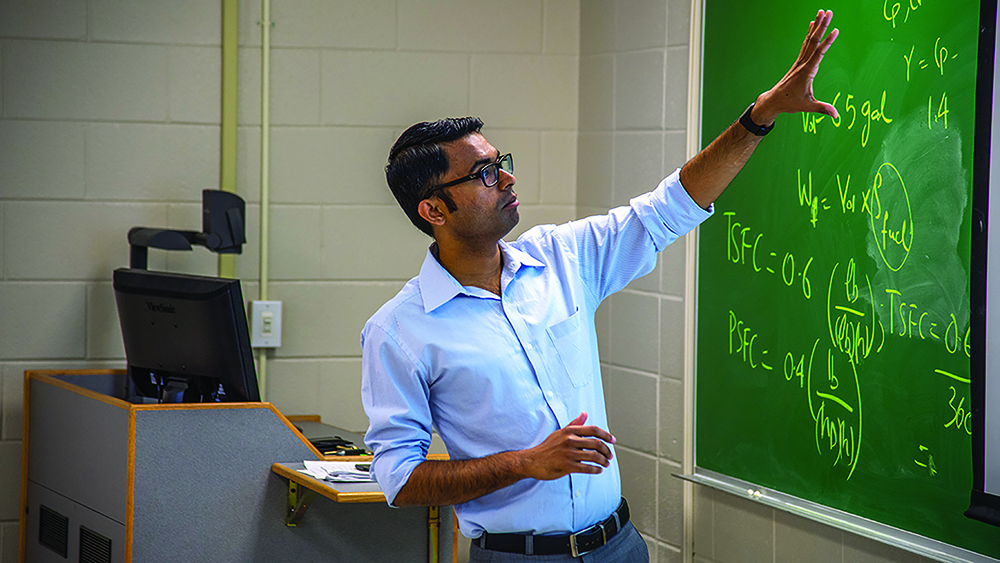
Vrishank Raghav, associate professor of aerospace engineering, is part of a three-year, $600,000 Defense Established Program to Stimulate Competitive Research (DEPSCoR) grant to better understand how bio-inspired surface texturing of aircraft wings can ensure smooth flight. There have been increased reports of ‘severe turbulence’ during flights across the U.S. Furthermore, significant delays in flights dueto adverse weather conditions are also very common.
“That’s because weather patterns bring in harsh aerodynamic environments for airplanes to fly through,” Raghav said. “These could be updrafts, downdrafts or vortices that are essentially swirling pockets of air that interact with an aerodynamic surface like a wing. When this interaction happens, it can lead to unsteady perturbations on the wing, which results in vibrations and potentially a stalling condition which is very dangerous.”
Is there an optimal solution to mitigate the problem? Raghav is partnering with a collaborator from Arizona State University to identify a solution. The study, “Understanding Vortex Turbulent Boundary Layer Interactions to Mitigate Separation Using Textured Surfaces,” is supported by the Air Force Office of Scientific Research and is part of an $18 million nationwide project.
While his collaborator will explore bio-inspired textures that interact with the turbulent air flow close to the surface, Raghav will engineer the findings onto a scaled-down wing and test them in a wind tunnel.